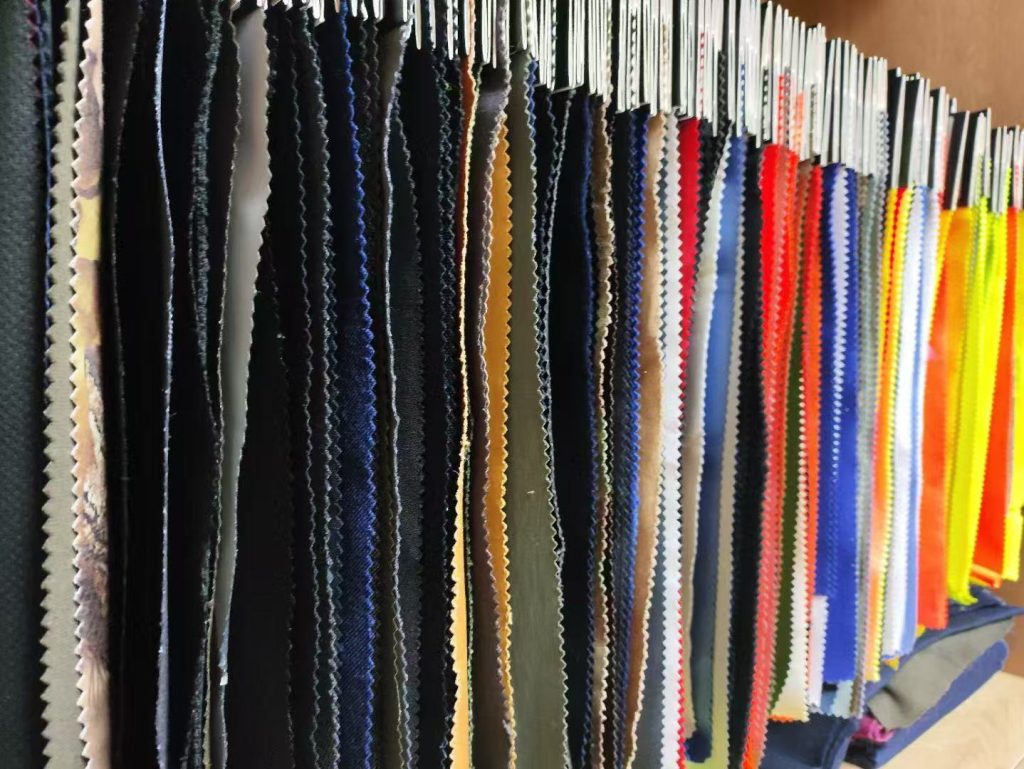Step 1: Clearly Define Your Needs
Before you contact fabric suppliers, take the time to define what you need. This includes:
- Fabric Composition: What fibers do you need? Cotton, polyester, or blends?
- Weight and Specifications: What is the GSM (grams per square meter)? What are the fabric specs, such as yarn count and density?
If you don’t know what “yarn count” or “density” means, don’t worry. If you’re confused, you can always send a physical sample. An A4 size is sufficient. The supplier can analyze and replicate the physical and chemical properties of the sample.
- Washing Conditions: How will the fabric be treated during garment production and customer use? Will it be subjected to high-temperature washing? Will it be exposed to bleach?
Real-Life Example: One of our clients had a serious problem after producing garments because the fabric they sourced changed color drastically. After investigation, we found that the garments had been washed with bleach, but the fabric was dyed with non-chlorine-resistant dyes. If they had told us this detail up front, we could have used chlorine-resistant dyes to avoid the problem.
Pro Tip: The more specific you are about what you need, the fewer problems you’ll have later. If you’re not sure, be prepared to test multiple samples and adjust your expectations accordingly.
Step 2: Find Fabric Suppliers
Finding the right supplier takes work, but it’s worth it. Here are some places to start:
- Online Platforms: Alibaba, Global Sources, and even Google can help you find suppliers.
- Industry Events: Trade shows like the Canton Fair are great places to meet suppliers in person.
- Social Networks: LinkedIn is a good place to find professional fabric suppliers.
Evaluating a Supplier’s Capabilities
- Certifications: Suppliers with certifications like OEKO-TEX, GRS, or ISO standards usually have good quality control systems in place.
- References and Reviews: Ask for testimonials from their existing clients or check online reviews.
- Product Range: A supplier with a wide range of products may be more flexible in meeting your needs.
Important Tip: Look for suppliers who respond quickly and thoroughly to your inquiries. A professional and patient supplier will save you time and stress in the long run.
Step 3: Talk to Suppliers
When you talk to suppliers, you need to be clear about what you want.
- Give Them a Sample: If you have a sample of the fabric, send it to them along with any test results you have. This will help them understand what you’re looking for.
- Ask for Certifications: For workwear fabrics, you might want to ask for certifications like OEKO-TEX or GRS, depending on your market.
- Tell Them What You Want: If you need the fabric quickly or if you need special finishing, tell them that.
What Not to Do
Most suppliers are happy to send you free samples if they have stock available. However, sometimes the samples you request are not standard and will require custom production, which can cost them hundreds or even thousands of dollars.
As a new customer, you should not expect the supplier to bear all of these costs. Producing samples costs money, and it also disrupts the supplier’s regular production schedule. When a supplier agrees to produce samples for a new customer, it’s a big deal.
Additional Communication Tips
- Use pictures or videos to show them what you’re talking about.
- Make sure you confirm delivery times. Misunderstandings about lead times can screw up your production schedule.
Step 4: Test Your Samples Before You Order
Never skip the sampling process. You need to test your fabric before you place a big order. Here’s how to test your samples:
Durability Testing
- Use a Martindale tester or something similar to see how the fabric wears.
- Cut a small section of the fabric and test it for tear strength.
Shrinkage and Washing
- Mark a square on the fabric (e.g., 10 cm x 10 cm).
- Wash it under the conditions you plan to use, and measure how much it shrinks.
Color Fastness
- Rub a damp white cloth against the fabric to see if the dye comes off.
- Expose the fabric to light to see if it fades.
Chemical Resistance
- Test the fabric with any detergents, bleach, or other chemicals it will come into contact with during its life.
Quick Tip: Always ask for extra sample yardage so you can do all of these tests without running out of fabric.
Step 5: Build Relationships with Your Suppliers
It might be tempting to switch suppliers all the time, but there are benefits to sticking with a supplier you trust:
- Consistent Quality: A supplier you trust will know what you’re looking for and will be able to deliver consistent results.
- Better Prices: Over time, suppliers will often give you discounts or better terms if you’re a loyal customer.
- Faster Turnaround: Once you have a relationship with a supplier, they will often respond to you more quickly and give you priority production slots.
- Mutual Growth: As you grow, your supplier will grow with you. They may invest in improving their processes or expanding their product offerings to better serve you.
Pro Tip: Treat your suppliers as partners, not just vendors. Good communication, paying them on time, and treating them with respect will go a long way.

